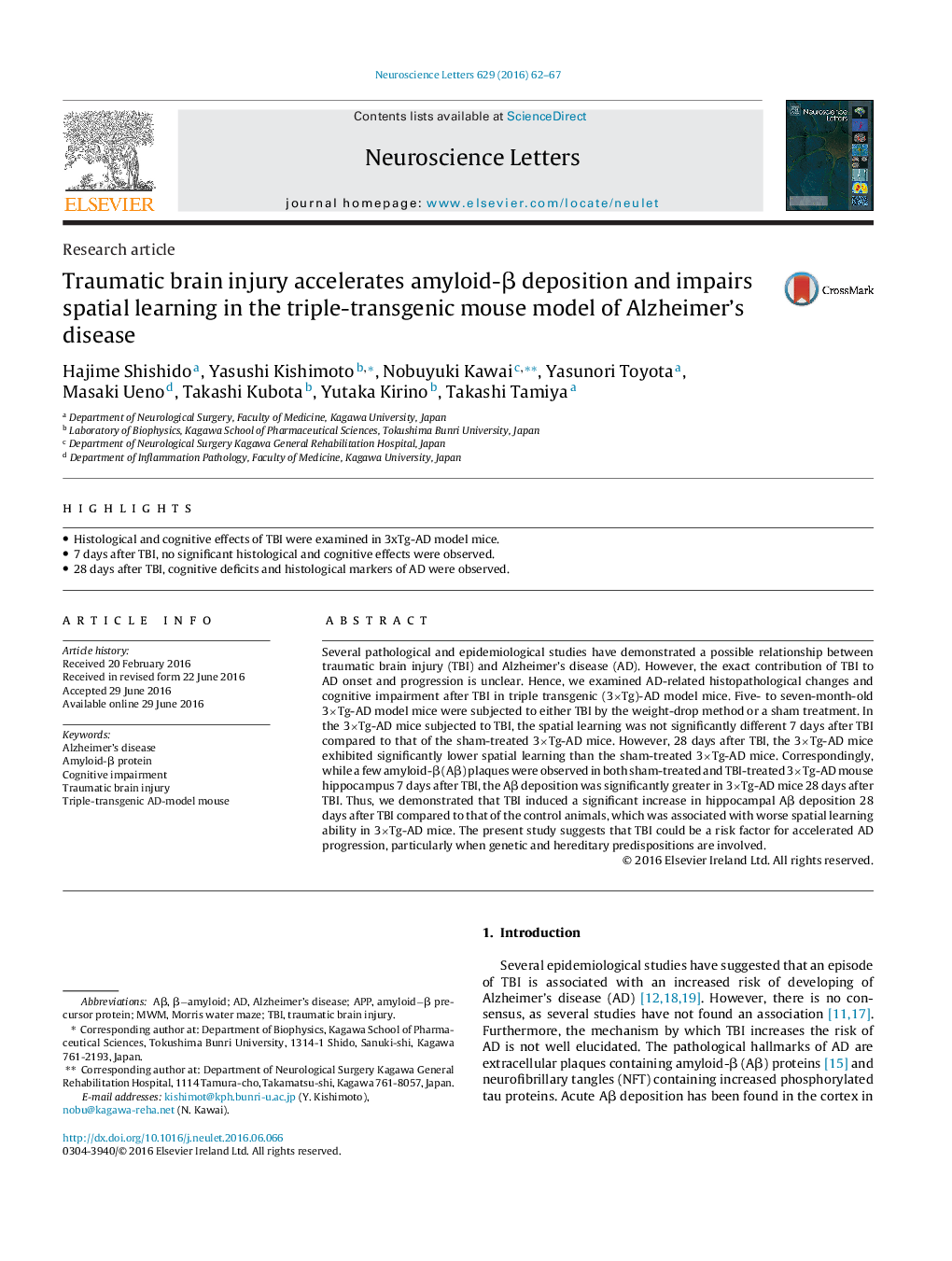| کد مقاله | کد نشریه | سال انتشار | مقاله انگلیسی | نسخه تمام متن |
|---|---|---|---|---|
| 4343213 | 1615070 | 2016 | 6 صفحه PDF | دانلود رایگان |

• Histological and cognitive effects of TBI were examined in 3xTg-AD model mice.
• 7 days after TBI, no significant histological and cognitive effects were observed.
• 28 days after TBI, cognitive deficits and histological markers of AD were observed.
Several pathological and epidemiological studies have demonstrated a possible relationship between traumatic brain injury (TBI) and Alzheimer’s disease (AD). However, the exact contribution of TBI to AD onset and progression is unclear. Hence, we examined AD-related histopathological changes and cognitive impairment after TBI in triple transgenic (3×Tg)-AD model mice. Five- to seven-month-old 3×Tg-AD model mice were subjected to either TBI by the weight-drop method or a sham treatment. In the 3×Tg-AD mice subjected to TBI, the spatial learning was not significantly different 7 days after TBI compared to that of the sham-treated 3×Tg-AD mice. However, 28 days after TBI, the 3×Tg-AD mice exhibited significantly lower spatial learning than the sham-treated 3×Tg-AD mice. Correspondingly, while a few amyloid-β (Aβ) plaques were observed in both sham-treated and TBI-treated 3×Tg-AD mouse hippocampus 7 days after TBI, the Aβ deposition was significantly greater in 3×Tg-AD mice 28 days after TBI. Thus, we demonstrated that TBI induced a significant increase in hippocampal Aβ deposition 28 days after TBI compared to that of the control animals, which was associated with worse spatial learning ability in 3×Tg-AD mice. The present study suggests that TBI could be a risk factor for accelerated AD progression, particularly when genetic and hereditary predispositions are involved.
Journal: Neuroscience Letters - Volume 629, 26 August 2016, Pages 62–67